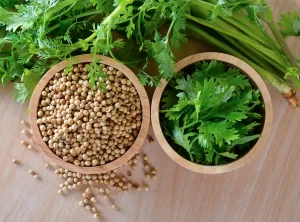Where do they come from
Bay leaves come from the bay laurel tree, also known as Laurus nobilis. This tree is native to the Mediterranean region and is cultivated in many parts of the world, including Europe, North America, and Asia.

The leaves of the bay laurel tree have been used in cooking and medicine for thousands of years, and they are still popular today for their distinct aroma and flavor. They are commonly used in Mediterranean and Middle Eastern cuisine, as well as in various soups, stews, and sauces in other parts of the world.
What are bay leaves used for
They are commonly used as a culinary herb to add flavor to various dishes. They are typically used in dried form and are added to soups, stews, casseroles, and sauces to infuse a subtle, earthy flavor.
The leaves can also be used in marinades and rubs for meat, poultry, and seafood. They are often added to pickling solutions and used to flavor vinegar and oils.
In addition to their culinary uses, they are also believed to have medicinal properties. They are said to aid in digestion, relieve respiratory problems, and have anti-inflammatory and antioxidant effects. However, more research is needed to confirm these claims.
Health Benefits
Bay leaves have been used for centuries in traditional medicine for their potential health benefits. Here are some of the potential health benefits :
- Anti-inflammatory properties: They contain compounds such as eugenol and myrcene that have anti-inflammatory properties. These compounds may help reduce inflammation in the body, which could potentially help manage conditions such as arthritis.
- Digestive health: The leaves are known to stimulate digestion and reduce symptoms of bloating and gas. They contain enzymes that help break down food, making it easier for the body to absorb nutrients.
- Respiratory health: Contain cineol, a compound that may help improve respiratory health by reducing inflammation in the respiratory tract. They may also help alleviate symptoms of coughs, colds, and other respiratory illnesses.
- Blood sugar regulation: They contain compounds that have been shown to help regulate blood sugar levels. This may make them useful for people with diabetes or those at risk of developing the condition.
- Anxiety and stress relief: The leaves contain linalool, a compound that has been shown to have a calming effect on the body. This may help reduce symptoms of anxiety and stress.
It’s important to note that while bay leaves may offer potential health benefits, they should not be relied on as a primary treatment for any health condition. If you are experiencing symptoms, it’s important to consult with a healthcare professional for proper diagnosis and treatment.


